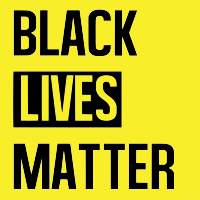
Photo from wikipedia
The novel coronavirus, SARS-CoV-2, has led to profound changes in the human condition, including how we socially and physically relate following stay-at-home (SH) mandates. For some individuals, SH mandates were… Click to show full abstract
The novel coronavirus, SARS-CoV-2, has led to profound changes in the human condition, including how we socially and physically relate following stay-at-home (SH) mandates. For some individuals, SH mandates were a refreshing break from business as usual, whereas for others, SH mandates exacerbated stress and poor health outcomes. For individuals experiencing domestic violence (DV), data are still accumulating regarding how SH mandates may be associated with abuse experiences, police reporting, health care service-seeking and other resource use. In one of the most comprehensive studies, to date, Baidoo et al1 shine a critical spotlight on DV-related police reporting and resource availability following COVID-19-related SH mandates in Chicago, including profound associated changes in majority Black communities. Baidoo et al analyzed DV-related police reporting and resource availability (using the NowPow online database of legal and advocacy, mental health, personal safety, and hotline resources), using April through June 2020 (following Chicago’s SH mandate) as the exposure period. Compared with the same time period in 2019, during the SH period, DV-related police reporting decreased (21.8 crimes per 100 000 persons per month), with nearly double the decrease observed in majority Black communities (40.8 crimes per 100 000 persons per month). Available DV resources also decreased (5.1 resources per 100 000 persons), with Chicago’s south side Black majority communities experiencing the most substantial declines (6.7 resources per 100 000 persons). As Baidoo et al1 note, it is possible that decreases in police reporting were associated with persons who were experiencing DV being confined at home with their abuser, with police distrust exacerbated by the death of George Floyd and local deaths, and with lack of professional advocacy to assist in making police contact. We offer 2 additional thoughts based on our research and clinical experience. First, when couples experiencing violence face an external crisis that poses a threat to their relationship, they oftentimes forge a temporary interpersonal closeness (manipulated by the abuser) to fight against the external crisis.2 However, this supposition needs to be evaluated with empirical data from the COVID-19 era. Second, given strained police relations, it is possible that individuals experiencing DV sought help in other settings, such as emergency and urgent care; data from these settings should be explored.3 Nevertheless, given the profound changes observed in Chicago’s south side Black communities associated with the SH mandate, the study by Baidoo et al provides a vital call to action to continue improving on DV prevention and response, especially in communities of minoritized race/ethnicity. Coinciding with the national focus on improving antiracist practices, the improvements needed would authorize and leverage funding and administrative supports to move beyond performative allyship (professing concern for harms to communities of minoritized race/ethnicity without backing with substantial action) to active allyship (leveraging power and privilege and courageously interrupting the status quo by engaging in prosocial behaviors that foster connection and solidarity with minoritized communities4). To provide better DV care in communities of minoritized race/ethnicity, we recommend prioritizing funding and administrative supports to reinvent DV training and performance metrics for police and other service professionals. Police and legal response to DV and related crimes has been historically laden with challenges, including mandatory arrest, lack of trauma informed response, and unconscious bias and discrimination toward Black communities.5 Few, if any, police departments + Related article
Journal Title: JAMA network open
Year Published: 2021
Link to full text (if available)
Share on Social Media: Sign Up to like & get
recommendations!